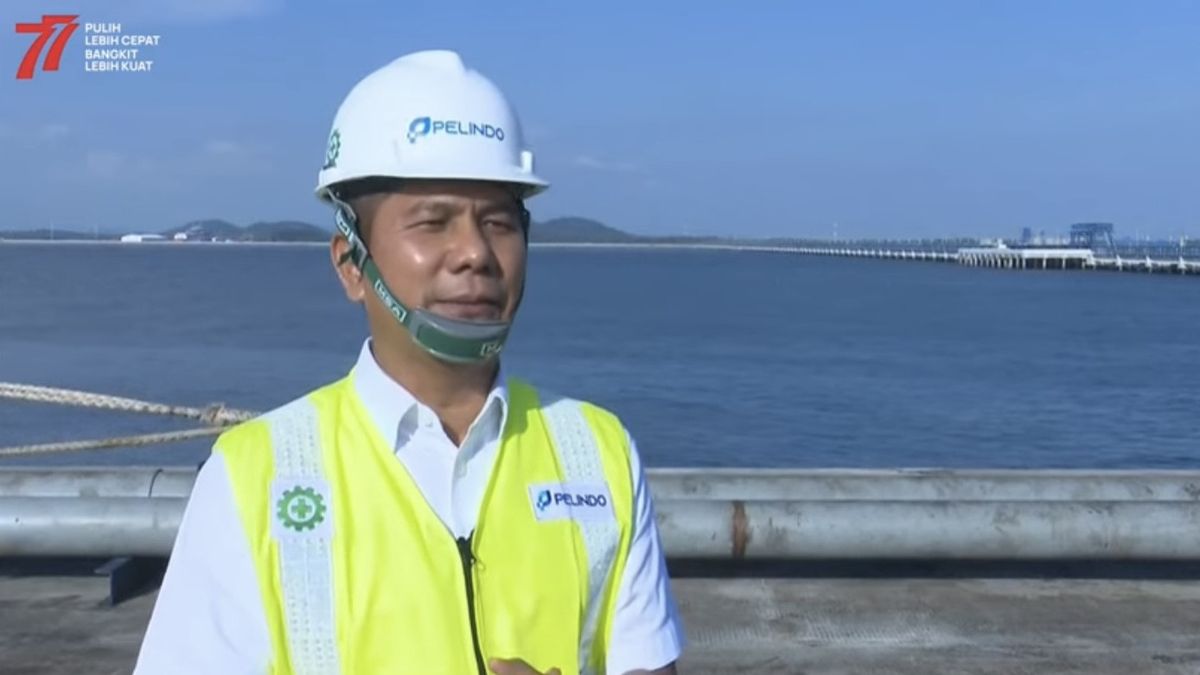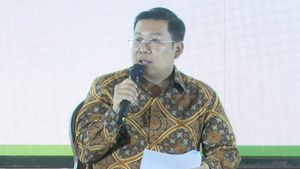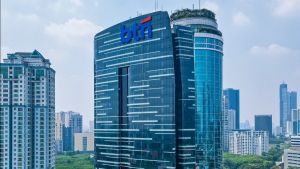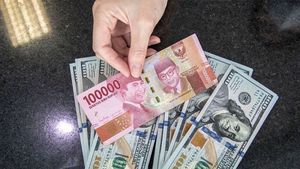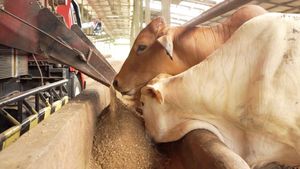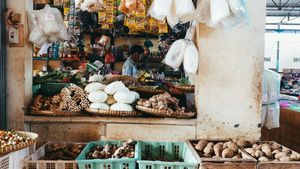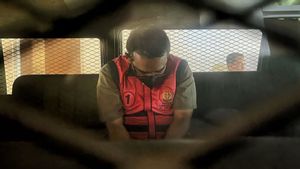JAKARTA - Pelindo President Director, Arif Suhartono, said that the Kijing Port of Pontianak Port is a replacement for the Dwikora Port.
The port development is in line with Pelindo's merger target, which is to create maritime connectivity.
As is known, President Joko Widodo (Jokowi) has just inaugurated the Kijing Port of Pontianak Port.
Kijing Terminal is a National Strategic Project built based on Presidential Decree no. 43/2017 concerning Acceleration of Development and Operation of Kijing Terminal at Pontianak Port in West Kalimantan.
"The construction of the Kijing Terminal is in line with one of the targets for the merger of Pelindo, whose role is to support more coordinated infrastructure development, so as to create maritime connectivity and industrial downstreaming," he said at the inauguration of the terminal, quoted from the Presidential Secretariat's YouTube, Tuesday, August 9.
The construction of Kijing Terminal is divided into three stages, Phase 1 Initial, Phase 1 Advanced and Phase 2.
The construction of this initial phase includes a pier with dimensions of 1,000 meters by 100 meters wide, a Port Management Area of 200X100 m, a 3.45 km road to the pier (trestle) with a width of 19.8 meters, a container terminal and a multipurpose terminal.
This terminal has four areas, namely containers with an initial stage capacity of 500,000 TEUs and a final stage capacity of 1.95 million TEUs per year, a dry bulk area with an initial stage capacity of 7 million tons and a final stage capacity of 15 million tons.
Then the liquid bulk area with an initial stage capacity of 5 million tons and a final stage capacity (12.18 million tons), and a multipurpose area with an initial stage capacity of 500 thousand tons and a final stage capacity of 1 million tons. The area of this port area reaches 200 hectares which includes the terminal area and the back up port area.
"In the future, this terminal will gradually replace the role of the existing port in Pontianak. The Pontianak port will later be maximized to serve other activities such as passenger ships or Ro-Ro ships and other services to support inter-island passenger activities using sea transportation, "said Arif.
According to Arif, West Kalimantan really needs a new port. Last year, the utilization of Dwikora Port had reached 257,000 TEUs or 86 percent of the port's capacity. Land for expansion is also no longer available.
Meanwhile, continued Arif, the sedimentation rate upstream of the Kapuas River and narrowing of the channel have an impact on the high cost of dredging operations.
The channel width has narrowed from 60 meters to 40 meters in the last five years.
The existence of this port will strengthen the competitiveness of superior products produced by the province of West Kalimantan. Such as crude palm oil (CPO), alumina, and bauxite.
CPO production in 2021 will reach 5 million tons, and is estimated to be at 7 million tons in 2030. West Kalimantan also has the largest bauxite reserves in Indonesia, namely 840 million tons or 67 percent of the total bauxite reserves in Indonesia.
In addition, the potential for developing an industrial area that is integrated with Kijing Terminal is still wide open.
So that land is needed that can be used for industrial areas and industrial downstream programs.
"We hope that the government can provide around 2000-3000 hectares behind the port which is only intended for industrial activities to support port activities," he said.
Moreover, continued Arif, Kijing Terminal is projected to become the largest international port area in Kalimantan and will become one of the hub ports in Indonesia, where at the beginning of its operation it was used for multipurpose services.
“We ask the government to facilitate the widening of arterial roads so that they can accommodate heavy vehicles. Second, there is toll road access that connects the trading cities of Singkawang and Pontianak," he said.
On the same occasion, Minister of Transportation Budi Karya Sumadi added, in order for the operation of Kijing Terminal to be optimal, synergy between Ministries and Institutions is also needed.
"I hope that the synergy between stakeholders such as relevant central and regional government agencies, business actors, and other stakeholders will continue to optimize the utilization of the Kijing Terminal, so that the noble goal of Terminal Development can be realized, namely to encourage Indonesia's economic growth, especially West Kalimantan," he said. Minister of Transportation Budi.
The English, Chinese, Japanese, Arabic, and French versions are automatically generated by the AI. So there may still be inaccuracies in translating, please always see Indonesian as our main language. (system supported by DigitalSiber.id)
